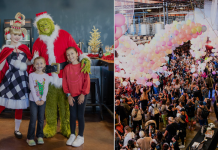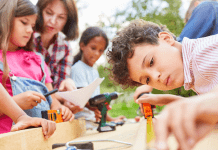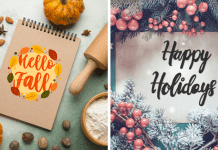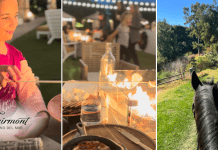What are you thankful for? A roof over your head? The internet? The sweet, warm, cozy mug of coffee that you forgot on the counter? Me too friend, me too; all that and much more. The thing that I’m most thankful for, though, is that I exist at all. I’m a mixed Native American woman and the knowledge of the pain and suffering that my relatives have endured always feels a little heavier in November.
The last three months of the year are inherently stressful. The holiday season really starts to ramp up: first with the costumes, then with the roasted turkeys, eventually with the gift lists. Everyone needs something from you, expecting your full attention for two to three solid months. Take that holiday stress and imagine adding another as the inevitable, avoidable, and defiantly imprudent “Pocahottie” costumes roll out at your nearest Halloween store. Imagine scenes of “The First Thanksgiving” in which the incongruously loinclothed-in-November Natives are being genteelly served by the benevolent settlers. Fall is my favorite season, but it taxes my patience as a Native woman.

Whoa, you might say. That’s a lot to dump on me all at once. It’s a lot, I get it.
The scope of deconstructing the horrifying treatment of Native peoples is overwhelming; being actively engaged in halting cultural and political marginalization can be energizing. In order to plow forward on a new path, we have to uncover the past and move forward with an understanding of Native peoples as contemporary, resilient people.
Here are some suggestions on how to be an ally this November, for Native American Heritage Month.
- Read! Native authors are out there, and there are books from a Native perspective very easily available. Here’s one list compiled by the First Nations Development Institute.
- Recognize instances of cultural appropriation in costumes and cultural practices and steer clear. Dressing up as victims of genocide doesn’t do anyone good. Connect with practices of your own background, I promise, they’re out there!
- Please buy from Native artists and makers. It is illegal under the Indian Arts and Craft Act of 1990 for goods to be deliberately misrepresented as genuine Native goods. Many boho style goods might not be explicitly violating the law, but exploiting the look while not supporting the communities from which the designs originate is in bad taste.
- Here’s a list of artists based in Southern California.
- Nursery items from the Native Collective B. Yellowtail are available from Crate & Barrel Kids.
- Beyond Buckskin is a brand that has put in tons for work to promote Native designers and artists. Check out their Buy Native List here.
- Learn first hand: Pow Wow season is winding down but there are still some opportunities to see a celebration in action. Pow Wows were not traditional for every Native community, but today Pow Wows are a way for families to come together and celebrate. The last local gatherings of the year are:
- Learn whose land you’re on using this interactive map and look up the community’s cultural center.
In some instances, North American culture is slowly coming to terms with its colonial past; it wasn’t all cornucopias and pewter buckled shoes. Twitter, for instance, has served as an amplifier for many Native scholars, activists, and other Native folks calling for understanding, change, and education. Nationally, two Native women, Sharice Davids (Ho-Chunk), and Deb Haaland (Pueblo of Laguna) have been elected to the US House of Representatives for the first time in history. Locally, we’ve gained Native representation in the California State House in the 40th Assembly District with Rep. James Ramos from the San Manuel Band of Mission Indians near Highland. Things are changing but educating children about Native perspectives on US history will help speed the process along.



















